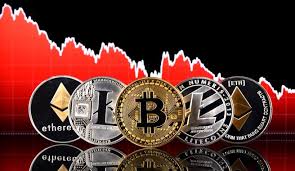Mastering Crypto Trading High-Frequency Strategies and Insights

Mastering Crypto Trading High-Frequency: Strategies and Insights
High-frequency trading (HFT) has emerged as a revolutionary approach in the world of finance, particularly within the dynamic realm of cryptocurrency. As traders increasingly seek methods to capitalize on minute price fluctuations, HFT provides a compelling framework for achieving rapid transactions and leveraging technological advancements. If you want to delve deeper into this trending topic, Crypto Trading High-Frequency click here to stay updated on the latest developments.
What is High-Frequency Trading?
High-frequency trading refers to the use of advanced algorithms and high-speed data networks to execute a large number of orders at extremely high speeds. Traders employing HFT strategies aim to exploit small price inefficiencies in the market, executing trades in milliseconds. This fast-paced environment allows for significant profit potential, albeit with increased risk.
Why High-Frequency Trading in Cryptocurrency?
Cryptocurrency markets are known for their volatility and rapid price changes, making them suitable for high-frequency trading. Unlike traditional markets, cryptocurrency exchanges operate 24/7, allowing traders to pursue opportunities around the clock. The decentralized nature of cryptocurrencies further means that various exchanges can exhibit price discrepancies, which HFT strategies strive to exploit.
Key Advantages of HFT
- Speed: The ability to execute trades within milliseconds provides a crucial advantage over traditional trading methods.
- Efficiency: HFT strategies often involve algorithmic trading, which means that human emotions are removed from trading decisions.
- Diversification: High-frequency traders can execute multiple strategies simultaneously, thereby spreading risk across various assets.
- Quantitative Analysis: HFT relies on data analysis, allowing traders to make informed decisions based on historical data and predictive algorithms.

Challenges and Risks of High-Frequency Trading
Despite its advantages, high-frequency trading presents various challenges and risks:
- Market Manipulation: The potential for market manipulation exists, leading to regulatory scrutiny and increased tension between exchanges and HFT firms.
- Technical Issues: HFT relies on technology; thus, any failure in systems or networks can result in severe losses.
- Competition: The HFT landscape is highly competitive, with many firms leveraging advanced technology; smaller traders may struggle to compete effectively.
- Liquidity Risk: While HFT typically helps to increase market liquidity, there can be moments of reduced liquidity when HFT firms pull back from trading during volatile events.
Implementing a High-Frequency Trading Strategy
For those looking to dive into the world of HFT, implementing a successful strategy involves several critical steps:
1. Develop a Robust Algorithm
Creating an algorithm that can analyze market trends and execute trades is vital. The algorithm should be able to process market data in real-time and react quickly to price changes. Regular backtesting against historical data will help refine and improve the algorithm’s performance.
2. Leverage Advanced Technology
Access to high-speed internet, a low-latency trading platform, and powerful CPUs/GPUs are essential for successful HFT. The right technology stack enables traders to execute orders faster than competitors.

3. Data Analysis and Market Research
Understanding market dynamics through extensive data analysis is critically important. Traders should gather data from various sources—price feeds, social media sentiment, and blockchain analytics—to inform their strategies.
4. Risk Management
Implementing effective risk management practices is crucial. This could involve setting stop-loss orders, diversifying trading strategies, and continuously monitoring performance metrics.
Tools and Platforms for HFT
Several platforms cater to high-frequency trading specific to cryptocurrencies, providing tools necessary for developers and traders:
- Algorithmic Trading Platforms: Platforms like QuantConnect and CryptoCompare enable users to create algorithms tailored to their trading needs.
- APIs from Exchanges: Major exchanges provide APIs that allow traders to integrate their algorithms directly with trading infrastructures, enabling high-speed execution.
- Market Data Providers: Access to real-time and historical market data is vital for making informed trading decisions.
The Future of High-Frequency Trading in Cryptocurrency
As the world of cryptocurrency evolves, so too will high-frequency trading strategies. Increased regulatory oversight, evolving technology, and growing competition will all shape the future landscape. Traders must remain vigilant and adaptive to these changes, continually innovating in their approach to remain ahead of the curve.
Conclusion
High-frequency trading in the cryptocurrency market presents unique opportunities and challenges. With the right technology, robust algorithms, and a sound risk management strategy, traders can tap into the potential of this fast-paced trading strategy. As the marketplace continues to evolve, those who embrace innovation while adhering to best practices will stand out in an increasingly crowded space.

